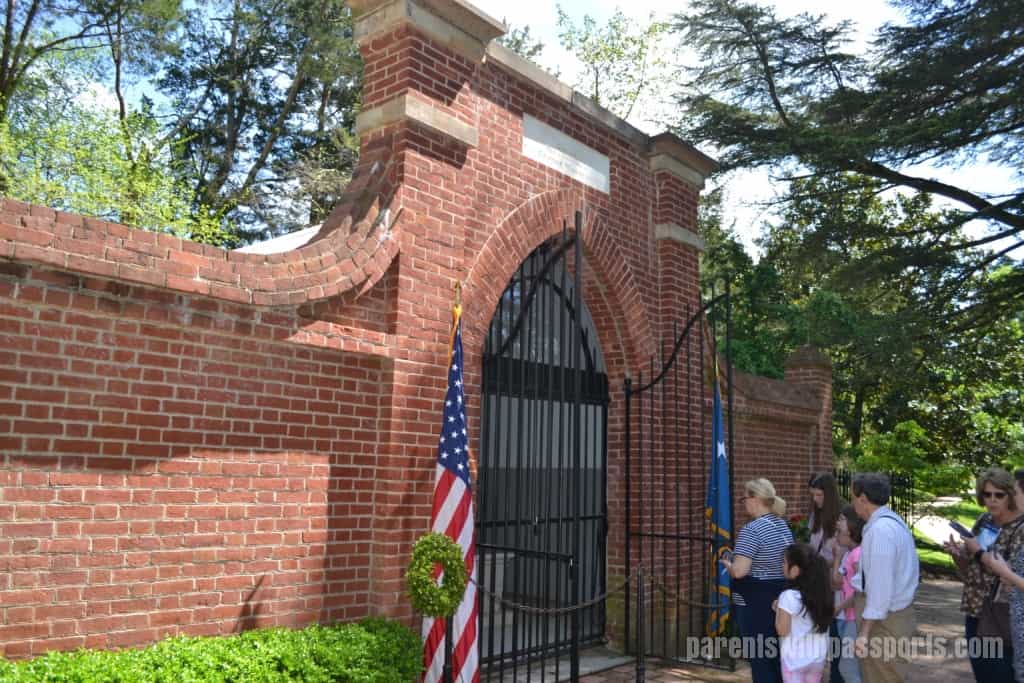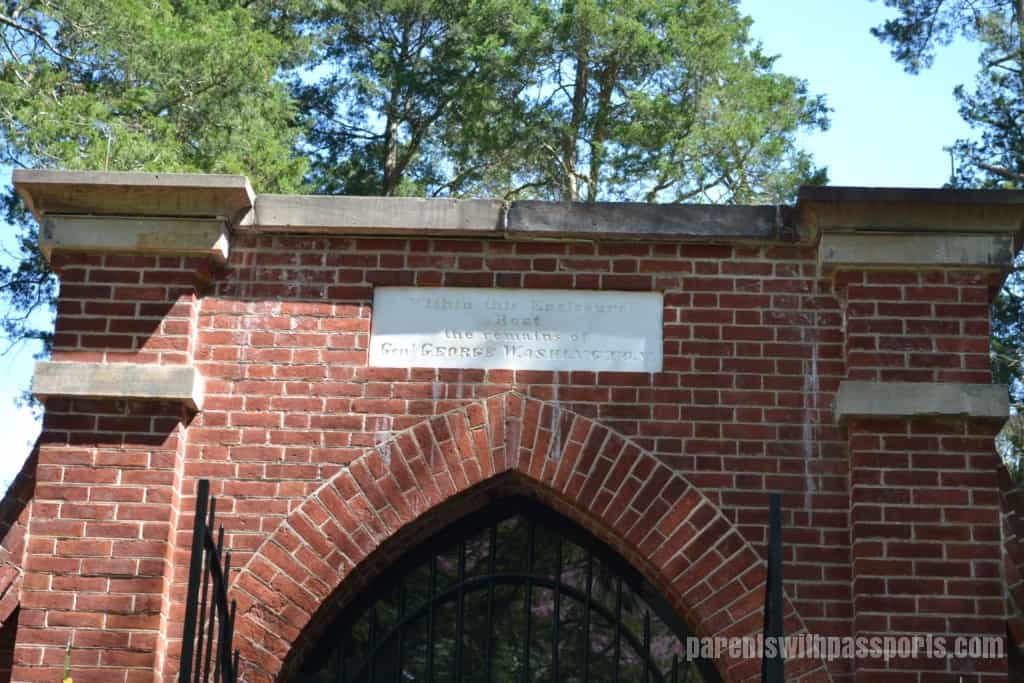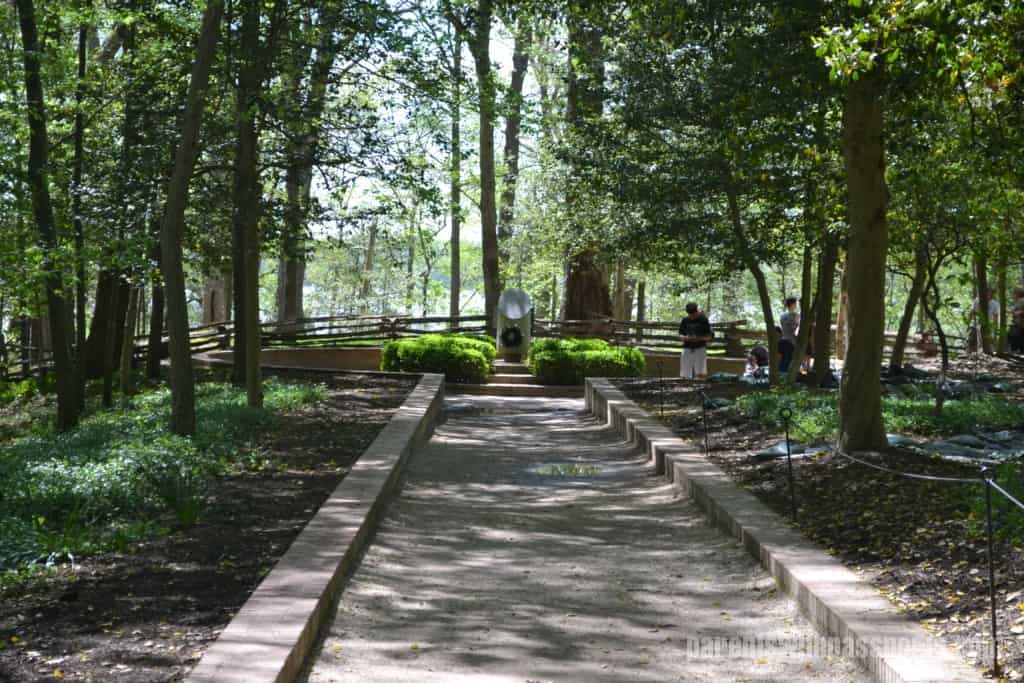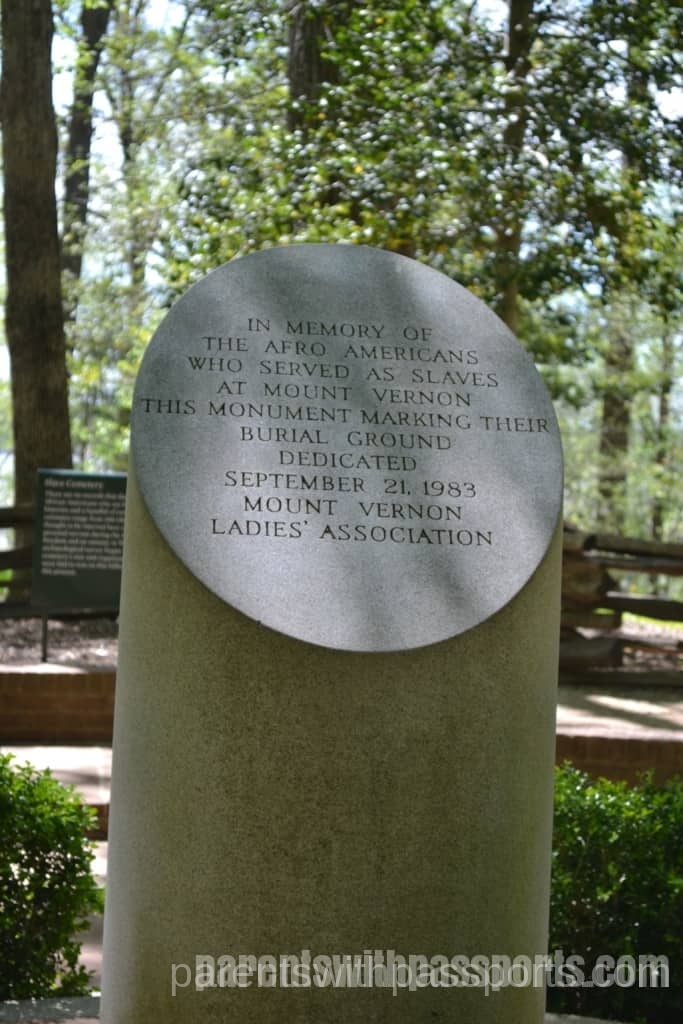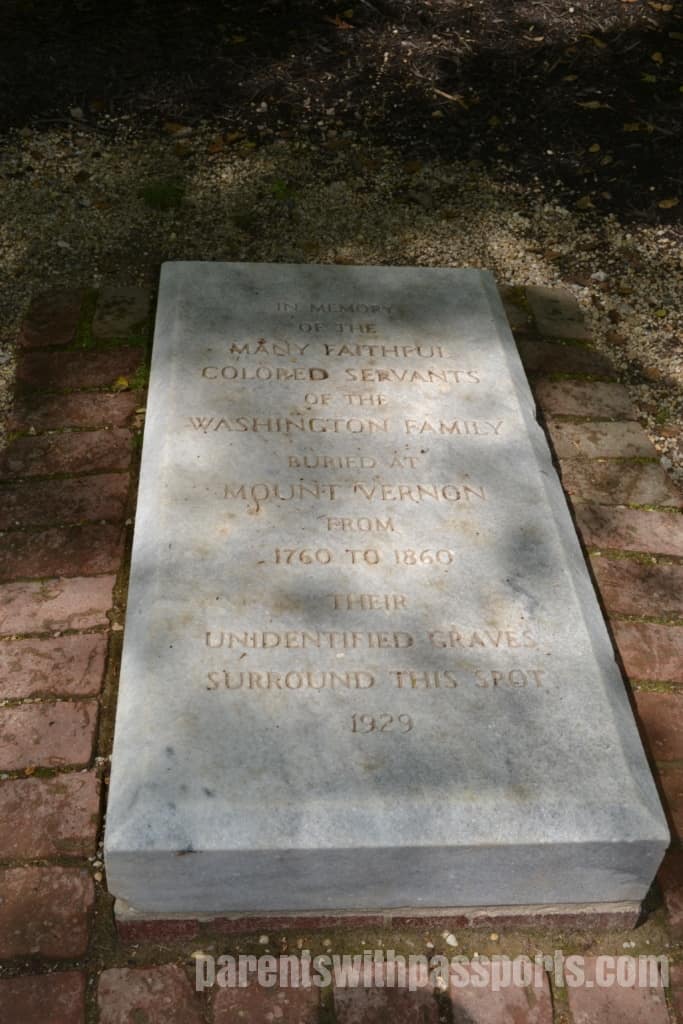Both George and Martha Washington are buried at Mount Vernon. George Washington’s will provided instruction for the construction of a new tomb, which is now his final resting place. Visitors to Mount Vernon line up every day to pay their respects to the Father of Our Country and his First Lady.
Even after walking the grounds all day and envisioning Washington’s life there, it was hard to wrap my head around the fact that George Washington’s body was on the other side of that gate. It was surreal and sobering. A staff member was on hand to make sure that the visitors remained quiet and respectful.
Nearby there is also a Slave Cemetery and Slave Memorial honoring the enslaved people who lived and worked on the estate. Slavery played an essential role on the estate, with as many as 316 slaves serving there at one point. But by the late 1780s, Washington was shifting his view on slavery. When he died in 1799, he freed all his remaining slaves in his will.
While it has long been known that this area just 50 yards away from Washington’s tomb was used as a slave cemetery, it is still unknown exactly how many slaves were buried there. A 1929 marker on the slave burial grounds is engraved: “In memory of the many faithful colored servants of the Washington family buried at Mount Vernon from 1760 to 1860. Their unidentified graves surround this spot.” An archaeological project began in 2014 to document the locations of individuals buried there. Thus far they have located 70 graves.
In an attempt to honor Mount Vernon’s slaves, a Slave Memorial was dedicated in 1983. A granite column surrounded by three concentric bricks circles is the centerpiece of the memorial. The three steps leading up to the column are inscribed with the words “Faith”, “Hope”, and “Love”. The memorial is quite and peaceful, and is a moving tribute to the estate’s slaves.
Both the tombs and the cemetery require quiet and respect and should therefore only be visited by children who can exhibit such behavior (recommended for elementary age and above).
